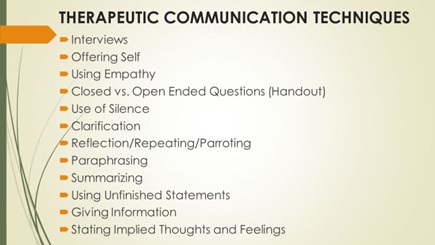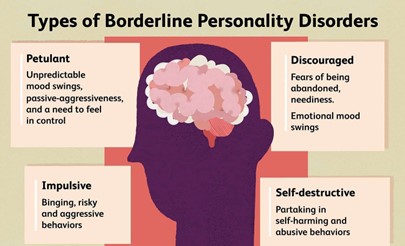A nurse is communicating with a client who was just admited for treatment of a substance use disorder. Which of the following communication techniques should the nurse identify as a barrier to therapeutic communication?
Select one:
Reflecting
Listening atentively
Offering advice
Giving information
The Correct Answer is C
Therapeutic communication involves actively listening to the client, demonstrating empathy, and using open-ended questions to encourage the client to express their thoughts and feelings.
Reflecting (option a) and listening attentively (option b) are both examples of effective therapeutic communication techniques as they demonstrate active listening and empathy.
However, offering advice (option c) is a barrier to therapeutic communication because it implies that the nurse knows what is best for the client and can solve their problems for them.
This can create a power dynamic in the nurse-client relationship and may discourage the client from expressing their true thoughts and feelings. Giving information (option d) can be an important aspect of therapeutic communication, but it should be done in a way that respects the client's autonomy and involves collaboration rather than giving directives.

Nursing Test Bank
Naxlex Comprehensive Predictor Exams
Related Questions
Correct Answer is C
Explanation
Therapeutic communication involves actively listening to the client, demonstrating empathy, and using open-ended questions to encourage the client to express their thoughts and feelings.
Reflecting (option a) and listening attentively (option b) are both examples of effective therapeutic communication techniques as they demonstrate active listening and empathy.
However, offering advice (option c) is a barrier to therapeutic communication because it implies that the nurse knows what is best for the client and can solve their problems for them.
This can create a power dynamic in the nurse-client relationship and may discourage the client from expressing their true thoughts and feelings. Giving information (option d) can be an important aspect of therapeutic communication, but it should be done in a way that respects the client's autonomy and involves collaboration rather than giving directives.

Correct Answer is A
Explanation
Borderline personality disorder is a serious mental illness characterized by instability in mood, behaviour, and self-image. Patients with borderline personality disorder are at a high risk of self-harm, suicide, and impulsive behaviours. Therefore, the nurse's priority assessment should be to identify any suicidal or homicidal ideations, as these can be life-threatening emergencies. Once identified, appropriate interventions should be initiated, such as suicide precautions, crisis management, and referral to mental health professionals for further evaluation and treatment.
While sleep patern changes, impulsive behaviours, and support systems are also important aspects to assess in patients with borderline personality disorder, they are not the priority when compared to suicidal or homicidal ideations.

Whether you are a student looking to ace your exams or a practicing nurse seeking to enhance your expertise , our nursing education contents will empower you with the confidence and competence to make a difference in the lives of patients and become a respected leader in the healthcare field.
Visit Naxlex, invest in your future and unlock endless possibilities with our unparalleled nursing education contents today
Report Wrong Answer on the Current Question
Do you disagree with the answer? If yes, what is your expected answer? Explain.
Kindly be descriptive with the issue you are facing.
